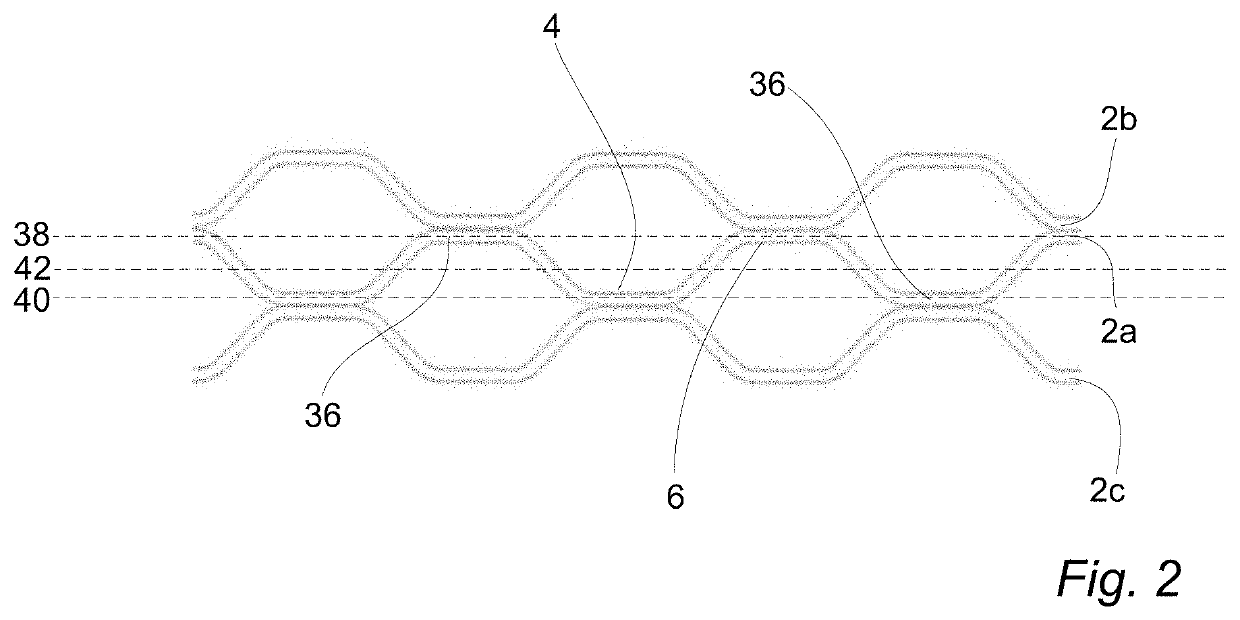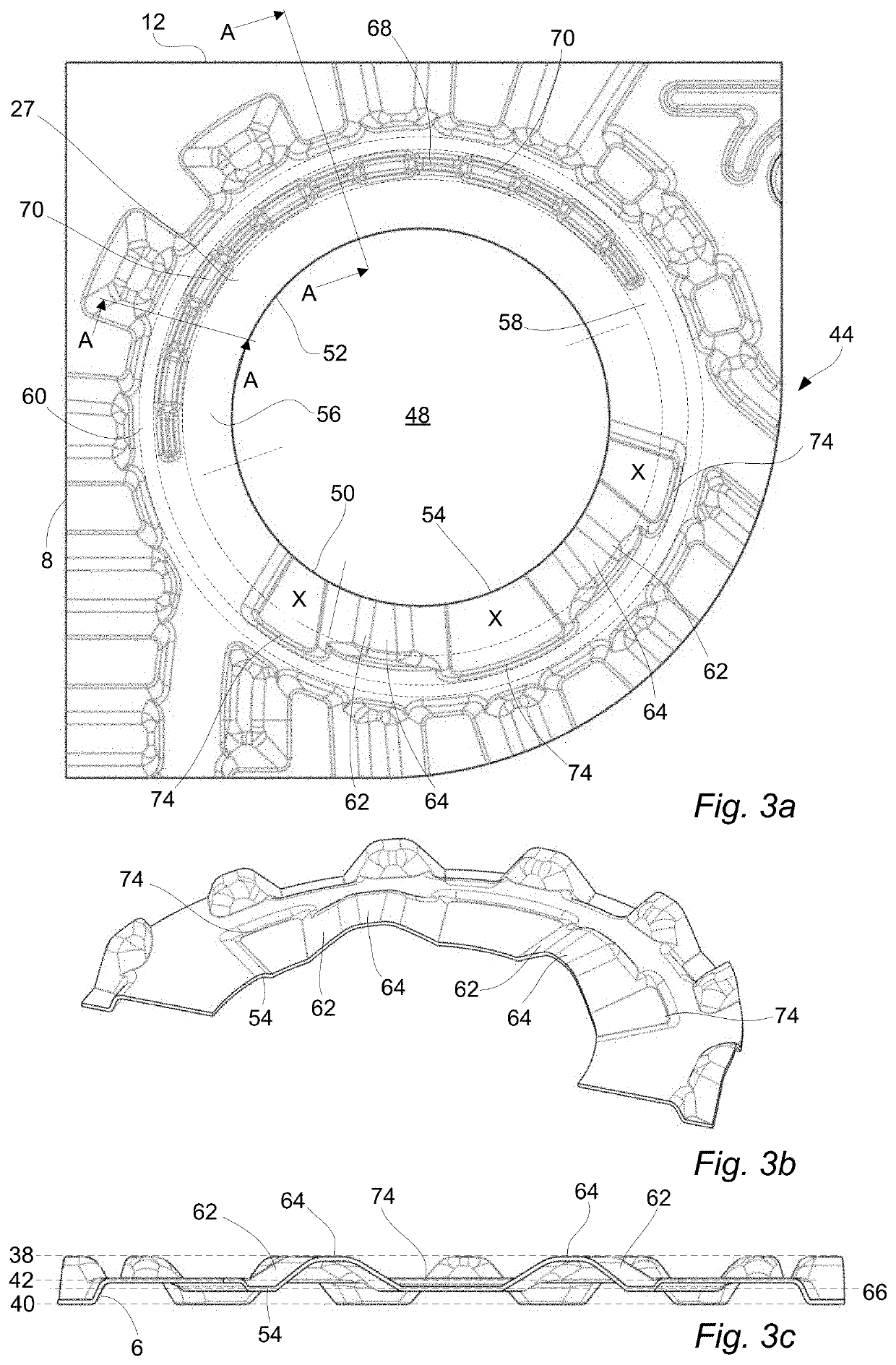Heat transfer plate and gasket
a technology of heat transfer plate and gasket, which is applied in the direction of indirect heat exchanger, lighting and heating apparatus, laminated elements, etc., can solve the problems of fibers and particles from the fluid flowing through the phe getting caught between the heat transfer plate and and the contact with the adjacent heat transfer plate may be very limited, so as to achieve the effect of more area efficient heat transfer pla
- Summary
- Abstract
- Description
- Claims
- Application Information
AI Technical Summary
Benefits of technology
Problems solved by technology
Method used
Image
Examples
Embodiment Construction
lass="d_n">[0089]FIG. 1 shows a heat transfer plate 2a of a gasketed plate heat exchanger as described by way of introduction. The gasketed PHE, which is not illustrated in full, comprises a pack of heat transfer plates 2 like the heat transfer plate 2a, i.e. a pack of similar heat transfer plates, separated by gaskets, which also are similar and which will be described in further detail below. In the plate pack, the heat transfer plates, which each has a front side 4 (illustrated in FIG. 1) and a back side 6 (not visible in FIG. 1 but indicated in FIG. 2), are arranged with the front side 4 of one heat transfer plate facing the front side 4 of a neighboring heat transfer plate, and every second heat transfer plate turned upside-down in relation to a reference orientation (illustrated in FIG. 1).
[0090]The heat transfer plate 2a is an essentially rectangular sheet of stainless steel. It comprises two opposing long sides 8, 10 and two opposing short sides 12, 14. The heat transfer pla...
PUM
 Login to View More
Login to View More Abstract
Description
Claims
Application Information
 Login to View More
Login to View More - R&D
- Intellectual Property
- Life Sciences
- Materials
- Tech Scout
- Unparalleled Data Quality
- Higher Quality Content
- 60% Fewer Hallucinations
Browse by: Latest US Patents, China's latest patents, Technical Efficacy Thesaurus, Application Domain, Technology Topic, Popular Technical Reports.
© 2025 PatSnap. All rights reserved.Legal|Privacy policy|Modern Slavery Act Transparency Statement|Sitemap|About US| Contact US: help@patsnap.com



